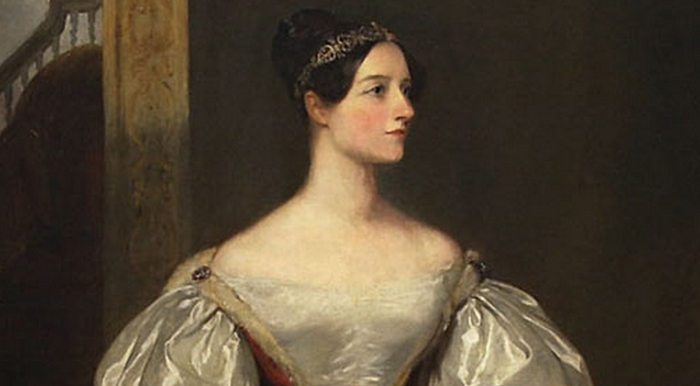 |
| Portrait of George Gordon, Baron of Byron |
At the age of twenty-five, the poet Byron entered what has been described as a torrid affair with his half-sister Augusta Leigh. Those who saw them together were struck by their resemblance. They met for the first time in 1801, when Byron was fourteen and Augusta seventeen.
- Mark T. Erickson, Inbreeding, Incest, and the Incest Taboo
 |
| Portrait of Augusta Leigh |
Augusta’s half-brother, George Gordon, Lord Byron, didn’t meet her until he went to Harrow School and even then only very rarely. From 1804 onwards, however, she wrote to him regularly and became his confidante especially in his quarrels with his mother. Their correspondence ceased for two years after Byron had gone abroad, and was not resumed until she sent him a letter expressing her sympathy on the death of his mother, Catherine.
Not having been brought up together they were almost like strangers to each other. But they got on well together and appear to have fallen in love with each other. When Byron’s marriage collapsed and he sailed away from England never to return, rumours of incest, a very serious and scandalous offence, were rife. Some say it was because of his fear of prosecution that Byron abandoned his country.
There is some evidence to support the incest accusation. The Honourable Augusta Leigh’s third daughter, born in spring of 1814, was christened Elizabeth Medora Leigh. A few days after the birth, Byron went to his sister’s house Swynford Paddocks, Six Mile Bottom, Cambridgeshire, to see the child, and wrote, in a letter to Lady Melbourne, his confidante: [“Oh! but it is ‘worth while’ — I can’t tell you why — and it is not an Ape and if it is — that must be my fault.”] (a child of an incestuous relationship was thought likely to be deformed).
“Medora” is the name of one of the heroines in Byron’s poem The Corsair, which was written at Newstead Abbey during the three weeks in January 1814 when the poet and a pregnant Augusta were snowbound there together.
- Wikipedia, Augusta Leigh
Byron died at the age of 36 from a medical infection, while assisting the Greeks in their war for independence. It was 4 days after Elizabeth’s 10th birthday.
Byron died at the age of 36 from a medical infection, while assisting the Greeks in their war for independence. It was 4 days after Elizabeth’s 10th birthday.
 |
| Portrait of a young Elizabeth Medora Leigh |
Likely to maintain appearances, especially for Augusta, Byron married
Annabella Milbanke. He had one child by her - a daughter, his only
legitimate child. She was born one year after Elizabeth. He named her
Augusta Ada. She later became Ada, countess of Lovelace, mathematician and arguably the world’s first programmer. Ada and her mother helped support Elizabeth, and her mother told her that Elizabeth was her half-sister.
 |
| Portrait of Augusta Ada, Countess of Lovelace |
While Byron was in exile in France, he wrote several poems to Augusta, and she visited him from time to time with their daughter.
- Lord Byron, Stanzas to Augusta
The BBC made
an excellent miniseries on the life of Lord Byron. It’s definitely worth
watching. Their depiction of his relationship with Augusta is very
moving. (As a side note, if he lived today, Lord Byron would probably identify as polyamorous. He was famous for having many lovers, male and female, and was known for not wanting to settle down. Part of this, as they depict in the miniseries, was because he couldn't settle down with Ada, but the rest of it was definitely constitutional.)
The ridiculousness of the "religulous" and then, social and legal, definitions of incest is highlighted here. What kind of moral transgression is incurred by a half-brother and sister having sexual intercourse? Only the medical grounds based on real siblings makes any sense, at least enough to urge caution to the participants. We have grown beyond this religulousness, haven't we?
ReplyDeleteIt is interesting that England at the time Byron left for France was an Anglican theocracy ( and still in some ways remains so today ) while France had already dispensed with rule by the church and had instituted secular Napoleonic Code laws that decriminalized homosexuality and adult consensual incest.Theoretically he could legally have lived with his sister in both England and France, as incest was not made a crime there until 1908 and was legal in France after 1810.The situation in the UK today is the reverse of time when Byron lived:sodomy was illegal, incest was legal. What a topsy-turvy world we live in!
ReplyDeleteInteresting! I hadn't known that an official statue wasn't passed in the UK until 1908. I looked into it though, and you're half-right. The common law courts and the ecclesiastical courts coordinated their regulation, and it actually was punishable, sometimes very seriously. I found this court case from postbellum Louisiana that mentions the use of the death penalty by common law courts. (Weird, considering I did not think Louisiana was a common law state.) I'm having trouble finding this supposed 1805 statute though.
Delete"Incest was neither defined nor punished by the common law of England at or before 1805. It was punished by statute in that country, and death was the penalty, and its definition was supplied by the canon law. [...]England has again made incest a statutory offence since 1805."
https://encrypted.google.com/search?sclient=psy-ab&biw=1451&bih=633&noj=1&q=england+common+law+incest+punishment&oq=england+common+law+incest+punishment&gs_l=serp.3...278674.284065.1.284346.21.18.0.0.0.0.295.2451.0j6j5.11.0....0...1c.1.64.serp..14.0.0.LPeAzpIoj5s